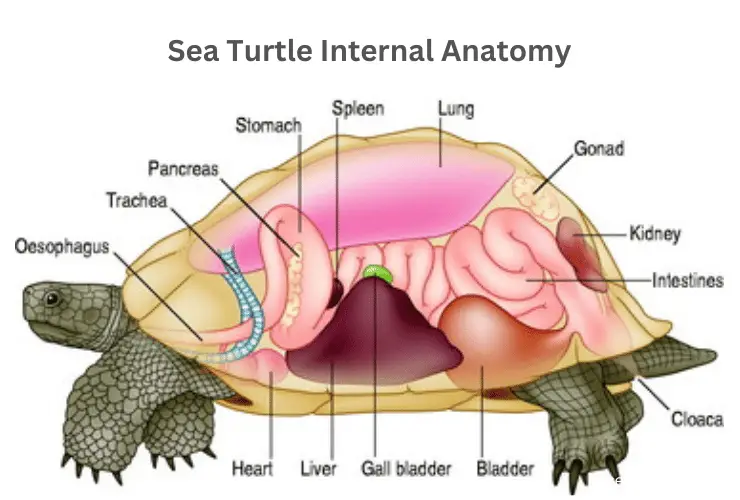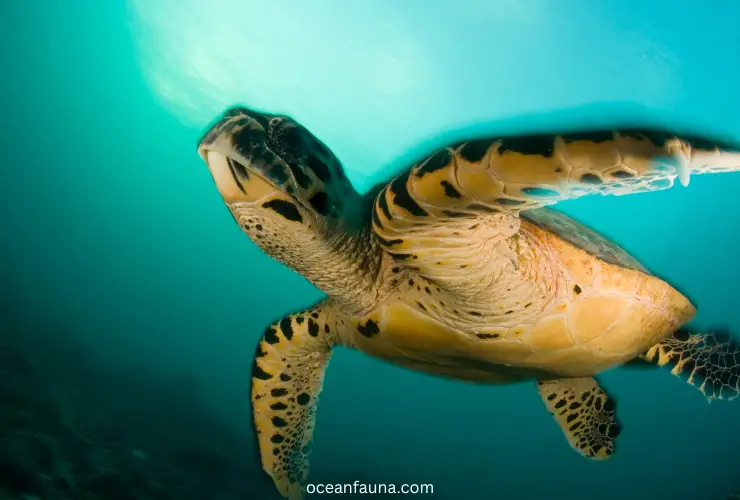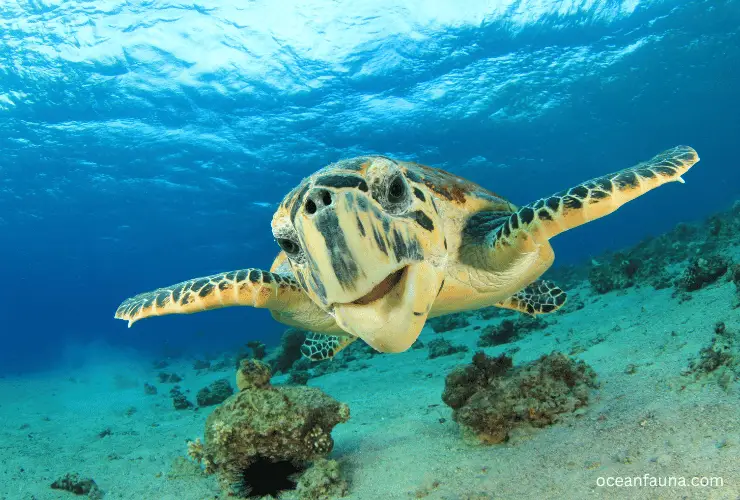Sea Turtles breathe through lungs, not gills. As reptiles, they breathe air through their lungs. They have two lungs. The lungs allow sea turtles to extract oxygen from the air they breathe. They take in air through their mouth and nose.
Sea turtles are fascinating creatures that have captured the imagination of people for centuries. They are some of the largest reptiles in the world. They have adapted to life in the ocean in some remarkable ways. One of the most intriguing features of sea turtles is their unique respiratory system.
Unlike fish and other marine animals, sea turtles don’t have gills to extract oxygen from the water. Instead, they rely on lungs, just like us humans. Let’s dive deep into a topic and explore more interesting information.
Why Do Sea Turtles Have Lungs? And What Do Turtle Lungs Do?
Sea turtles have lungs because they are air-breathing reptiles adapted to live in the water. The evolution of lungs allows sea turtles to come to the surface to breathe and extract oxygen.

Source: veteriankey.com
Did you know where sea turtle’s lungs are? Sea turtles have their lungs positioned beneath their carapace, the hard upper shell covering their body, and the vertebral column, their backbone.
Here are some key points about what turtle lungs do:
- When turtles come to the surface to breathe, they quickly inhale a large volume of air into their lungs.
- Turtles can hold their breath for extended periods of time (40 to 60 minutes Or several hours). But they must come to the surface to breathe air.
- Turtle lungs are highly efficient and can expand and contract to accommodate the air they take in, which helps them to breathe more efficiently.
- The flexible chest of a turtle also helps regulate its buoyancy when swimming. The propensity of an object to float in water is known as buoyancy.
- Turtles may also use their lungs to help with thermoregulation. By controlling the amount of air, they take in to help regulate their body temperature.
Does a Sea Turtle Have Gills?
No, sea turtles do not have gills. Gills are specialized respiratory organs found in fish and other aquatic animals. That enables them to extract oxygen from the water.
On the other hand, sea turtles are reptiles and breathe air through their lungs, just like other reptiles and mammals. Sea turtles inhale and exhale air through their nostrils before diving back into the water.
What Do they Have Instead of Gills?

Turtles have a cloaca instead of gills. The cloaca is a respiratory structure that can absorb oxygen from the water. But unlike gills, it is insufficient to provide all the oxygen turtles require to survive.
The cloaca of a turtle functions similarly to the gills. When turtles are submerged in water, their cloaca acts as a pump that draws in water and extracts oxygen. The cloaca then expels the water and repeats the process.
However, turtles cannot survive for extended periods solely by using their cloaca. However, using the cloaca for respiration is less demanding for the turtle. It is not sufficient for survival under normal conditions.
How can sea turtles hold their breath for up to 30 minutes while humans can only last for a minute?
These shelled sea creatures have unique features that allow them to stay underwater for a long time.
- First of all, sea turtles can slow down their metabolic rate. That help conserves energy and extends their time underwater. It’s like they can go into a super chill mode and become the zen masters of the sea.
- But that’s not all – sea turtles have two large lungs that can store oxygen. So they can use it to keep breathing even when not taking in new air.
- And get this – sea turtles also have a secret weapon called cloacal respiration. This is a fancy term for extracting oxygen directly from the water through their cloaca. That is kind of like their underwater butt. Yes, you read that right. These turtles can literally breathe through their butts! They have some unique skills.
- Aside from all that, sea turtles are incredibly efficient swimmers. Their streamlined body shape and powerful flippers help them easily glide through the water.
Conclusion
Sea turtles are fascinating creatures that have evolved to breathe air through their lungs. Their streamlined body shape and powerful flippers help them glide through the water efficiently.
These incredible adaptations have enabled sea turtles to survive for millions of years. Sea turtles remain an essential and iconic species in the marine ecosystem.

